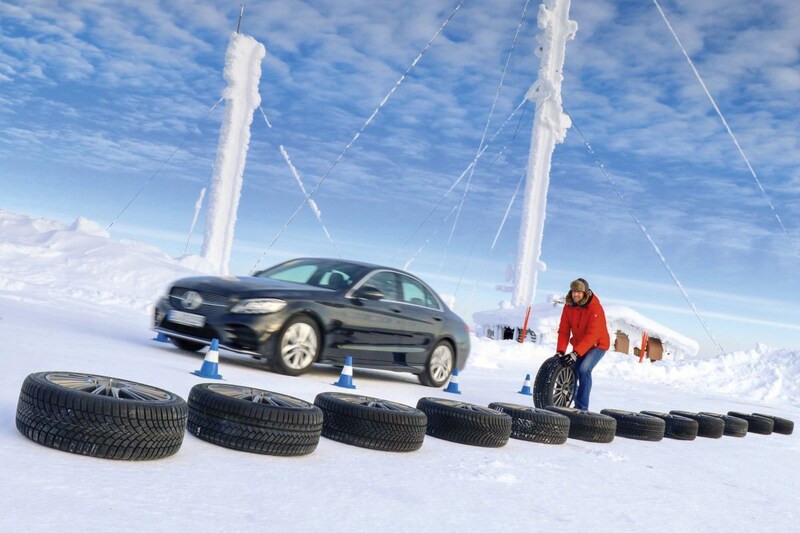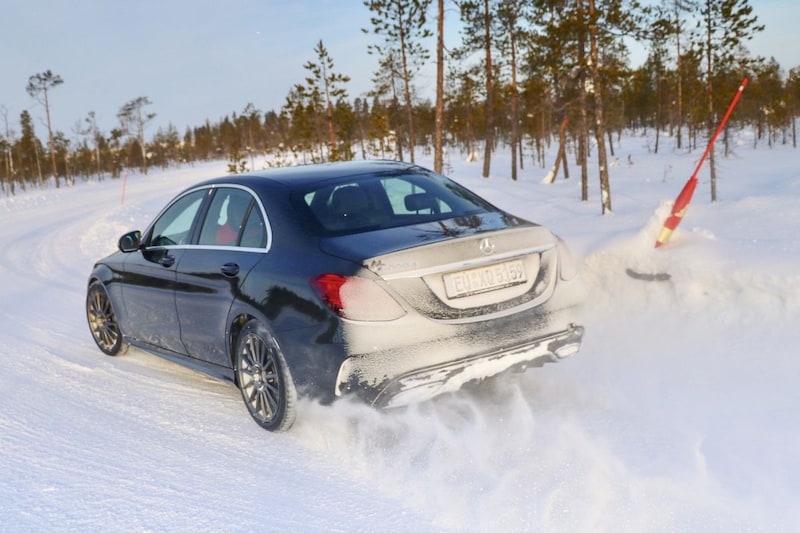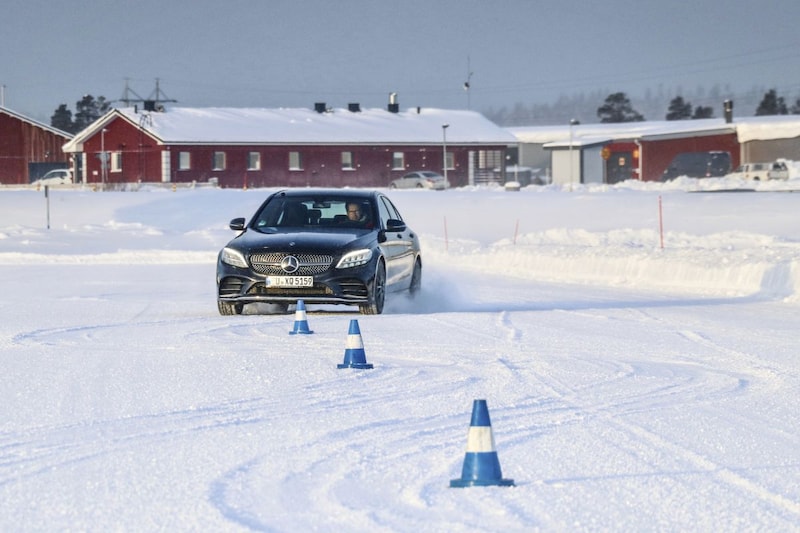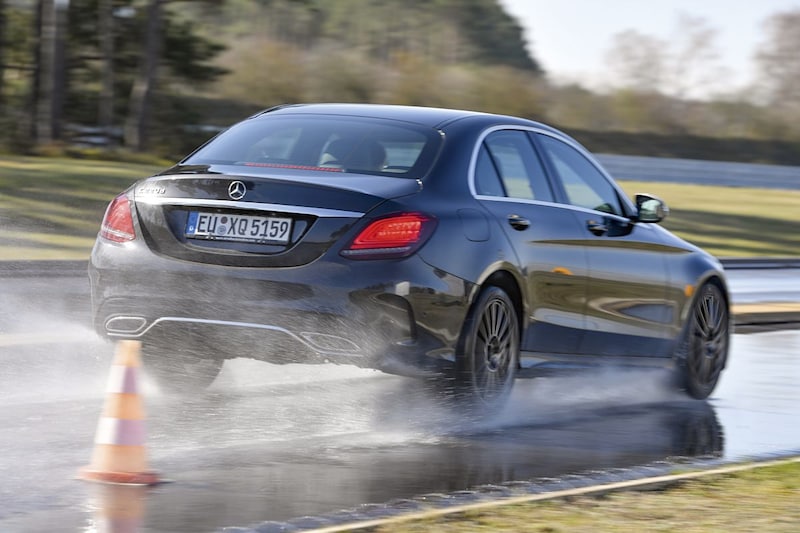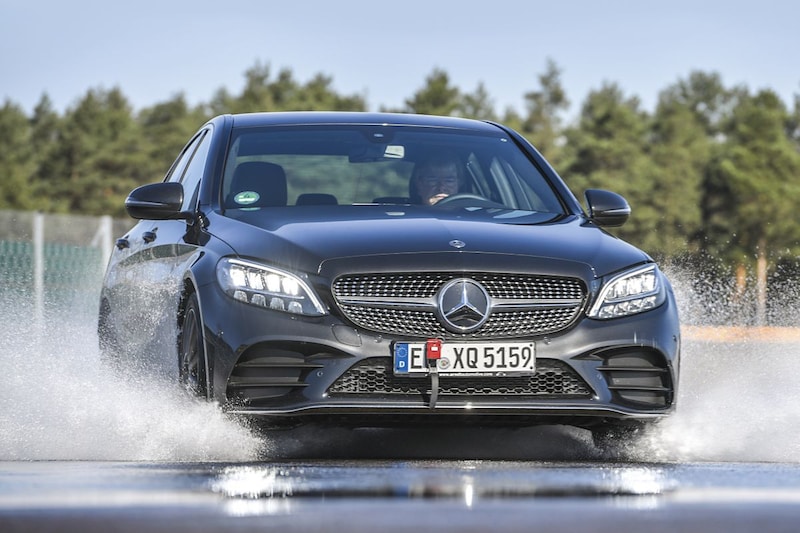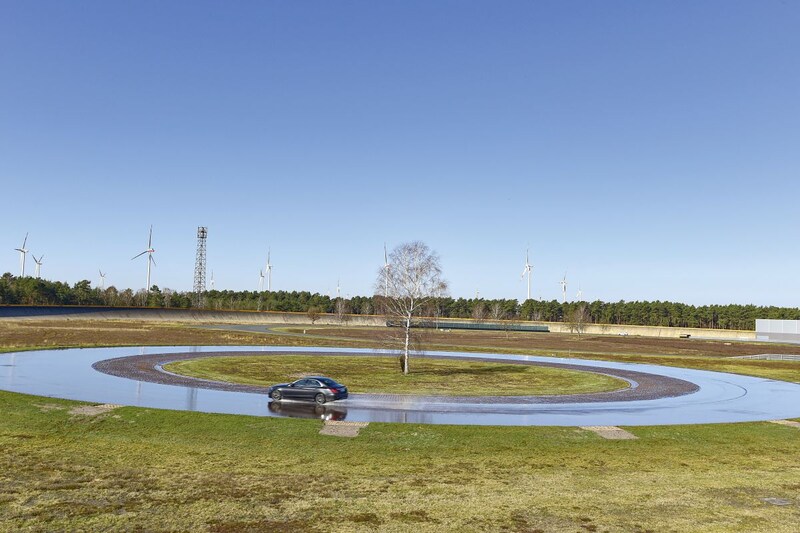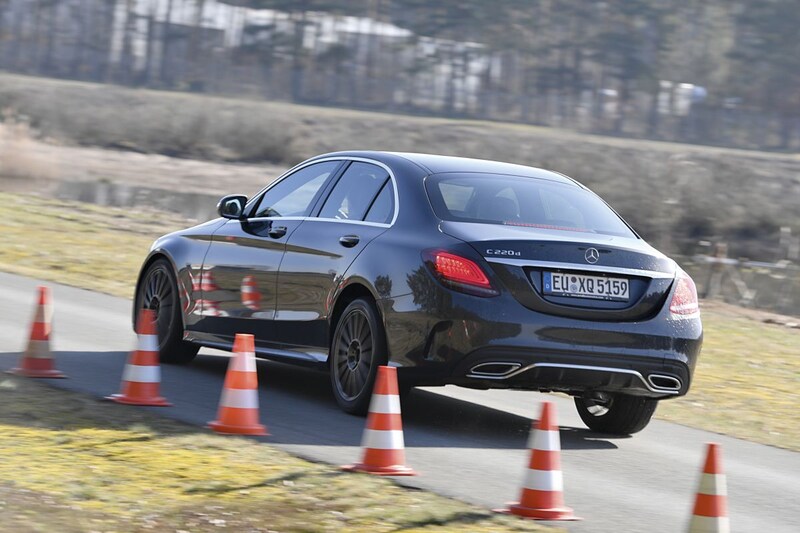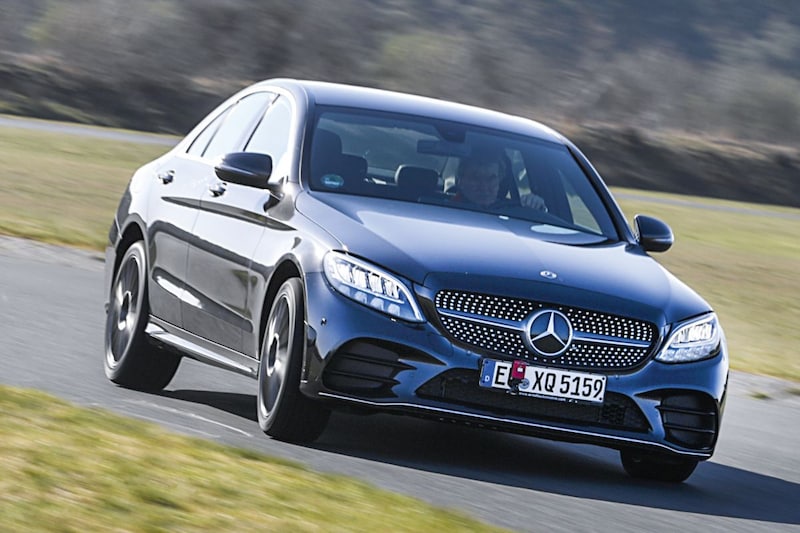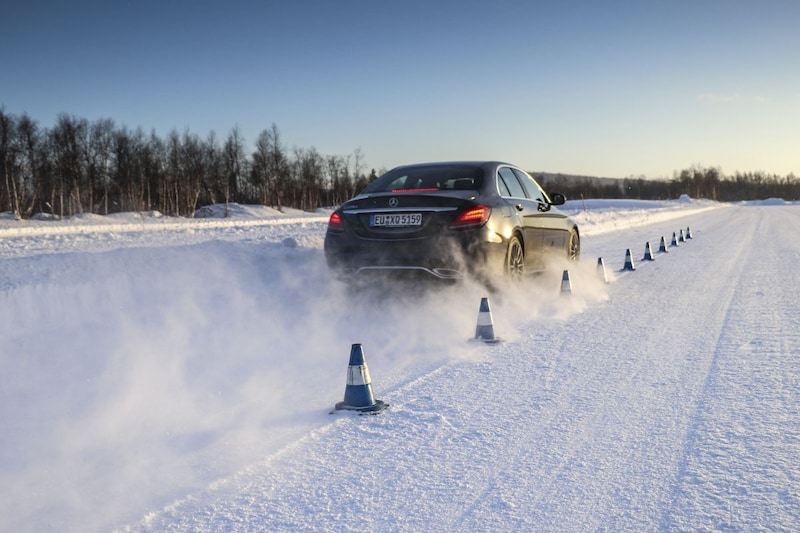Mixed tires in the endurance test: front 225/45, rear 245/40 R 18 on the axle – which winter tire offers the best reserves?
Anyone who dares to drive with summer tires on snow and ice today will notice that there is not much movement in the car, except for the wheels spinning wildly. Summer tires have developed into extreme asphalt biters in recent decades, with braking distances that were considered technically unfeasible a few years ago. The problem: they only stick to the road in summer temperatures. If the thermometer drops below plus 5 degrees, the rubber compound begins to harden and the tires can no longer build up grip.
With winter tires it is just the other way around. Their rubber compounds work best at low temperatures, and they are really in their element on snow and ice. It’s amazing how much power they can transfer to four postcard-sized contact pads. On the snowy test tracks of Finland, some 250 kilometers north of the Arctic Circle, our twelve candidates can show what they can do under a Mercedes C-Class.
We also have one of the increasingly popular all-season tires and a summer tire with us for comparison in all our tests. How safe are they – not only on snow, but also on wet and dry surfaces – and what are the weaknesses?
Hankook and Michelin are test winners
Hankook winter tires (Winter i*cept evo3) and Michelin (Pilot Alpine 5) share first place. Both received the test result “excellent”. The Hankook tire scores with excellent performance on snowy and wet slopes, good safety reserves for aquaplaning, dynamic handling and short braking distances on snowy and wet slopes and offers very good value for money. The Michelin tire impresses with its exemplary handling in all weather conditions, precise steering and short braking distances. The only weakness of the Pilot Alpin 5 is its high price point – with a price of about 700 euros per set, it is about 200 euros above the Hankook tire (about 495 euros / set).
The Vredestein’s Wintrac Pro follows in third place (since first place was awarded twice, second place was not taken). He also got the test result “excellent”. The Vredestein tire impresses as an all-round talent with very good winter and wet properties, stable handling on wet and dry surfaces and its low price point. The only weak point: the driving comfort is only average. Bridgestone tires (Bliz bag LM005), Dunlop (Winter Sports 5), Goodyear (UltraGrip Performance +) and Continental (WinterContact TS 850P) were rated “good”. We do not recommend the Nankang Snow SV-2 tyre, which in the test showed only limited grip on ice and snow and dangerously long braking distances in wet conditions.
Conclusion
Winter tires have never been as good and safe as they are today. The three tires from Hankook, Michelin and Vredestein, which we rated as ‘excellent’, offer balanced performance and generous safety reserves in all weather conditions.
The full results of all 12 winter tires and all test results, including statements and graphs, can be read this week in AutoWeek no. 46 (17-24 November), or digitally available at the bottom of this article.
Price comparator
With the AutoWeek Car Tire Price Comparator, we offer you a handy tool to find the best offers on summer tires. The price comparator currently provides an overview of the full range of 16 different tire providers. Also here are the results of all tire tests of the past 9 years.
– Thanks for information from Autoweek.nl
